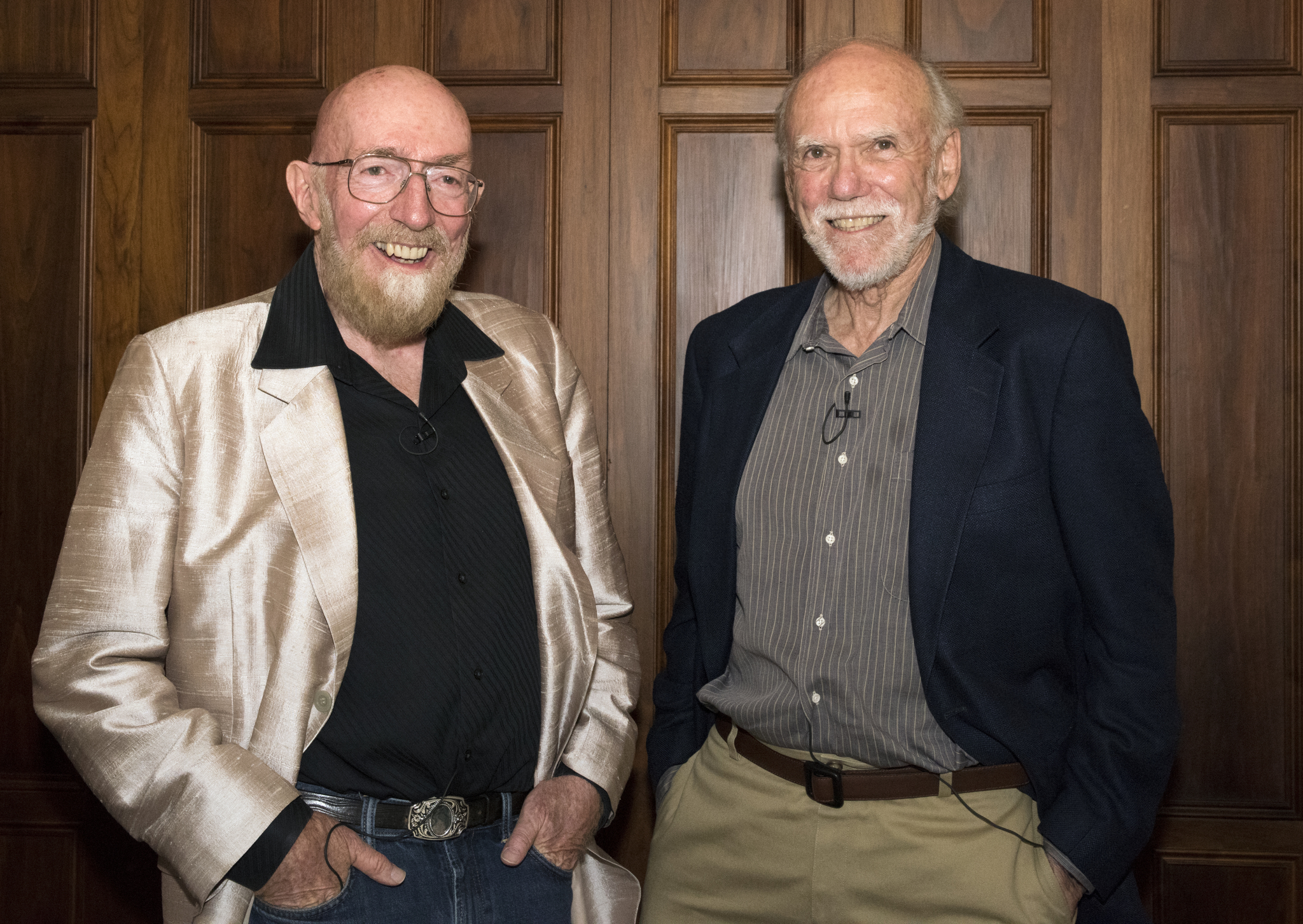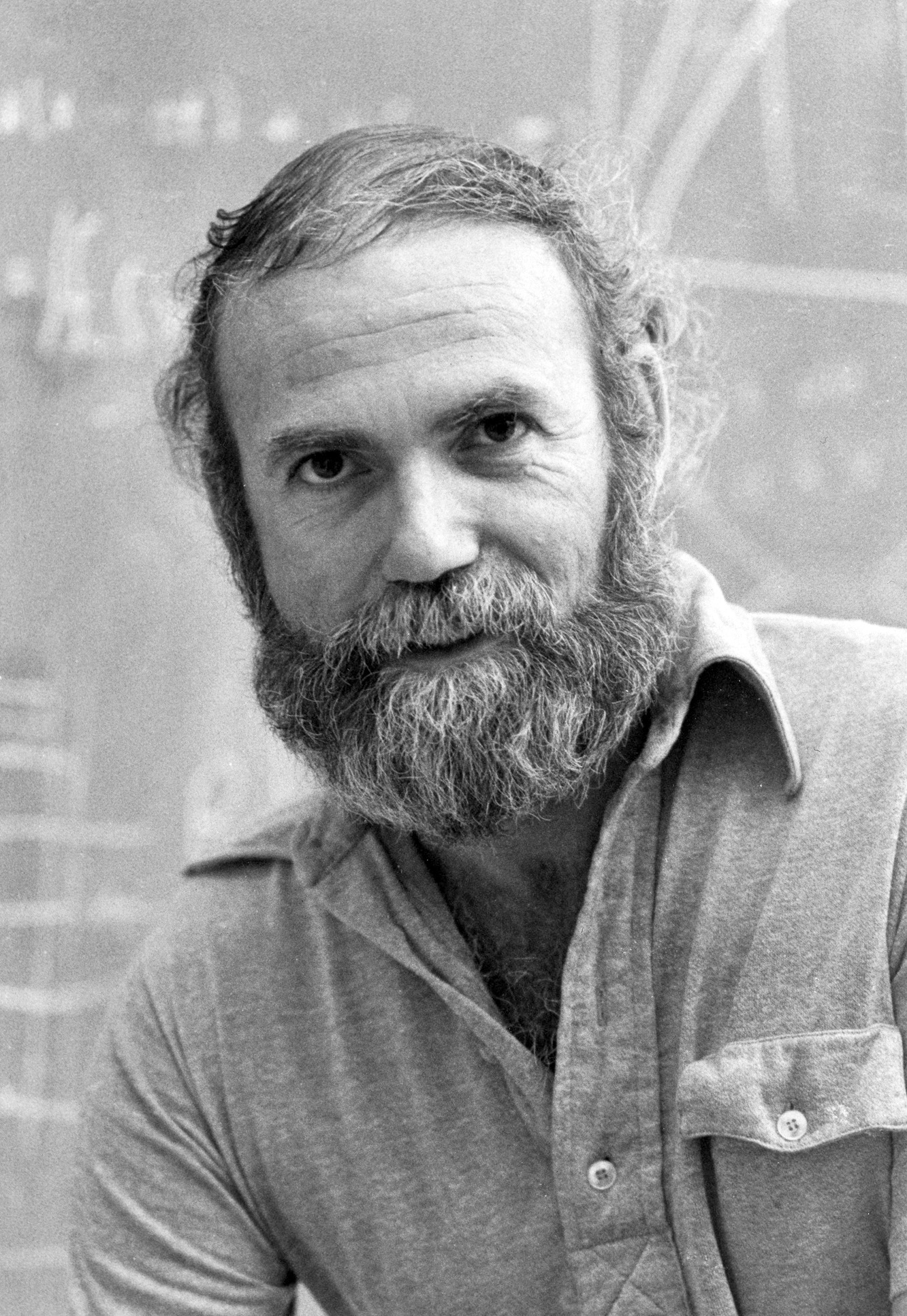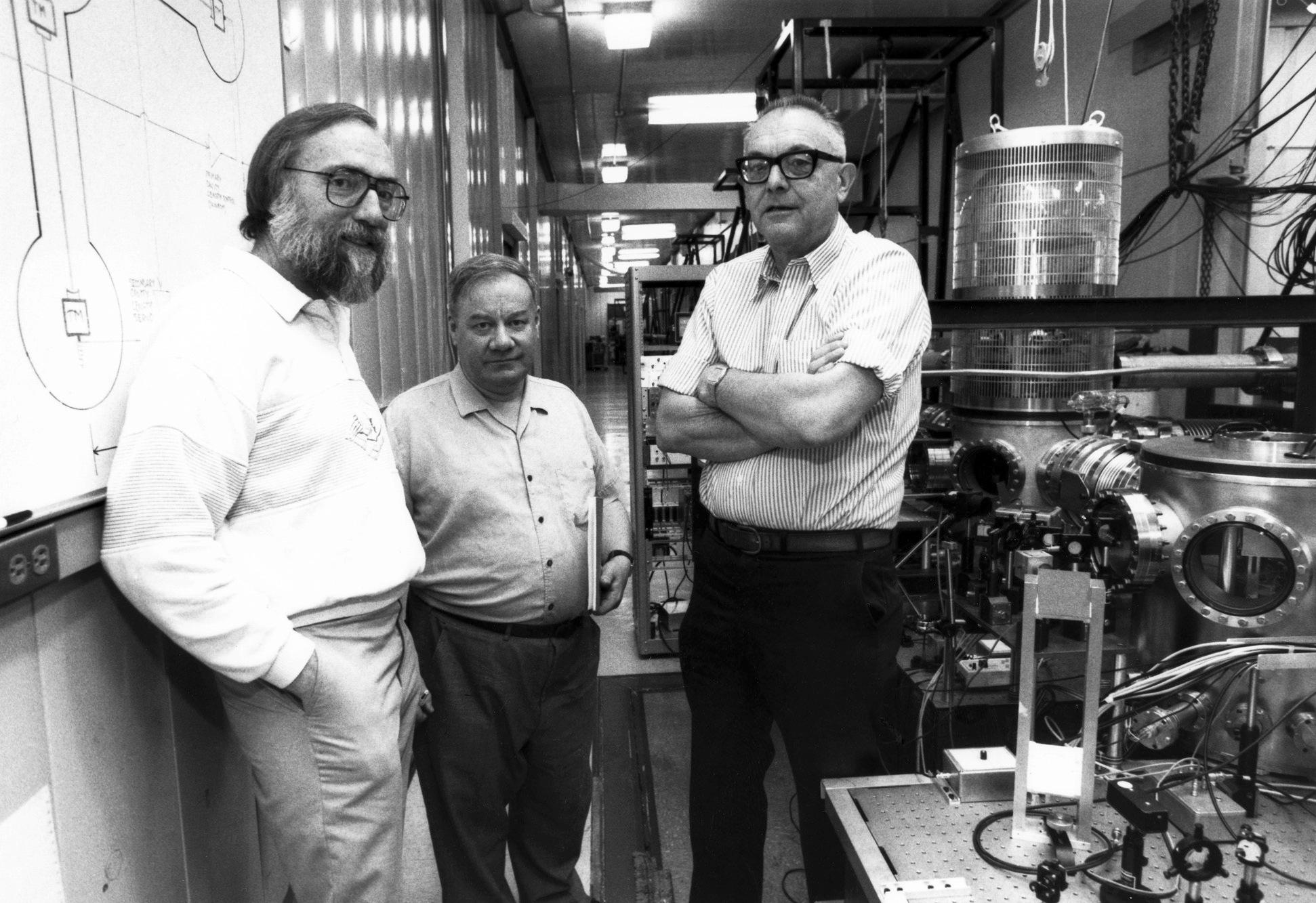Gravitational-Wave Scientists: Q&A with Nobel Winners Kip Thorne and Barry Barish

PASADENA, Calif. ― The 2017 Nobel Prize in physics has been awarded to three scientists who played instrumental roles in the first-ever direct detection of gravitational waves, or ripples in the fabric of the universe. Space.com had the chance to talk with two of the prizewinners, Kip Thorne and Barry C. Barish.
Thorne and Barish were both instrumental in the development of the Laser Interferometer Gravitational-wave Observatory (LIGO). In 2016, after almost 40 years of planning and work, LIGO made history by detecting ripples in the universal fabric that Albert Einstein called "space-time." These waves are created by the motion of very massive objects; thus far, LIGO has detected a total of four gravitational wave signals, all created by pairs of black holes circling each other and merging.
Thorne is a theoretical physicist who did important work on the nature of these space-time ripples. Barish served as director of LIGO from 1997 to 2005, playing a major role in completing the design of the instrument, and constructing the LIGO facilities and the instruments themselves. ['New Era' of Astrophysics: Why Gravitational Waves Are So Important]
We spoke with Thorne and Barish following a news conference at the California Institute of Technology (Caltech) yesterday (Oct. 3). Caltech manages LIGO in collaboration with the Massachusetts Institute of Technology.
The third winner of this year's Nobel Prize in physics is Rai Weiss, who wrote a paper in the 1970s outlining the requirements of an experimental instrument that could detect the incredibly small effects of gravitational waves passing through the Earth. The paper served as the blueprint for LIGO. Weiss and Thorne instigated the LIGO collaboration and sought the original funding for the project. Weiss continued to be a leader and major contributor to LIGO up until and after his retirement.
Q&A with Barry Barish
Barry Barish joined LIGO in 1994 as principal investigator, having worked in leadership positions on several large, high-energy physics projects. In 1997, he took on a second role as the director of the LIGO collaboration. Barish oversaw LIGO's final design stages and secured funding for the massive project from the National Science Foundation. He also oversaw construction of the two LIGO facilities from 1994 to 1999, and then the installation and commissioning of the initial LIGO instruments from 1999 to 2005.

Space.com: How does it feel to be a Nobel Prize winner? Does it feel like the title fits yet?
Get the Space.com Newsletter
Breaking space news, the latest updates on rocket launches, skywatching events and more!
Barry Barish: It hasn't totally sunk in. I don't know if I can wear it well. And what I mean by wearing it well is that, to me, there is some undeserved or not totally deserved prestige that comes with it.
Space.com: Not totally deserved?!
Barish: Well…there's some aura about a Nobel Prize, there's a prestige, that gives me a responsibility that I didn't have before, that goes beyond my own work, as a spokesman for science.
I think that there's a need in our society for scientists to take a stand on certain kinds of issues — whether its global warming, or … you can pick your own. And there are people who are in a position to do that and I think that's a responsibility that comes with [winning a Nobel]. And so, I am appreciative that [after winning the prize] I have a little more power in my research, but I think there's another part of it that I hope I can live up to.
Space.com: I think you'll also be considered a representative for large experiments — how to run them, how to fund them, how to keep them funded. What lessons have you taken from this whole experience about managing big science projects?
Barish: I think there's some really good ones. One is … international collaboration.
LIGO has collaborators from all over the world, including Russia, [a country that] our government won't talk to almost. [Those researchers] are an integral part of LIGO. And we work side by side without even thinking, "You're from these different countries." We get resources from the governments that are put together. Why can't that same model be translated more to how countries behave?
That wasn't quite what you were asking but it's something that we've learned a lot about how to do.
The parts that we're not so good at, I think, are that scientists like independence and like to run their own show, they don't want to have a boss. It's hard to do large, expensive projects without some sort of hierarchical structure where somebody can tell you — maybe softly, but at least tell you — what to do, or you have some supervisionover you. Physicists like to be completely independent of each other. So that's a constant struggle. And it's a place that sometimes we get in trouble.
Space.com: I think you and many of the people who were thanked in the news-conference speeches are people who have the very unique double skillset of being great scientists and great managers. So did you willfully go into a leadership position, or did you also want to be a scientist who got left alone?
Barish: Oh, I was always a scientist. I grew into [leadership] because when I started I did science with a few people and then my interests got to be things that required more people and it just kind of evolved through my career.
And then I did an interesting thing. Scientists, especially physicists, we're presumptuous and think we can do everything better than everybody else. And one thing that I realized early is, I had some talent managing and organizing things, you know some people are better organizers than others, but why should I reinvent the wheel? People [already] know how to do this. So I actually spent a lot of time reading about how professional managers work. And how people build bridges.
Space.com: Do you mean literal bridges, or relationship bridges between people?
Barish: [Literal] bridges.
Space.com: Because that's comparable to building a big structure like LIGO?
Barish: Yes, because that isn't exactly how we want to build an experiment but … How do you go about building a bridge or a building, and putting together that kind of effort so that it's efficient, gets done on time [and] doesn't overspend? That's done by having effective organization, but it's usually rather hierarchical.
We didn't know how to build this Advanced LIGO 20 years ago, we had to evolve our way into it. … We had to build in enough flexibility to be able to do that. And (give) encouragement so that people can develop the things that will make it better.
But, I think, as I said [during the news conference] there's three great experiments [in the world] that are arguably some of the best physics that's been done. All of them are similar regarding] technical complexity, pushing the state of the art, and being very well done. There's the fantastic experiments at CERN, the deep underground neutrino experiment, and ours. To me, it's proof that doing great science right now can be done really well by taking advantage of international collaboration, pooling resources and developing ambitious things using modern technology.
Q&A with Kip Thorne
In the 1960s and 1970s, Kip Thorne, along with a group of collaborators, worked to greatly improve theoretical descriptions of the physics of gravitational waves. The group anticipated details about the gravitational-wave signals that an experiment like LIGO might be able to detect. Thorne continued to work on the experimental side of LIGO as designs for the project progressed, and served a vital role in explaining the science of the experiment to lawmakers and funding agencies. He also helped develop the computing programs that are necessary to interpret the signals that LIGO detects.

Space.com: You're a theorist, so it's your job to really think about these wild situations out in space that LIGO is seeing — these black holes colliding and merging together. You worked on the computing efforts that make it possible to simulate those collisions in incredible detail, and you worked on the movie "Interstellar" (2014), which included an breathtaking simulation of a black hole. Do any of those simulations compare to what you can imagine on your own?
Kip Thorne: In some ways [they do].
So what you saw in "Interstellar," in terms of what goes on around a black hole, that was produced by the team at Double Negative [Productions] using the same techniques as the SXS [Simulating Extreme Spacetime] team was using to do visualization of LIGO's gravitational-wave sources. It's the same thing. And I was tied to both teams.
But there's a big difference. In the movie, that black hole was very quiescent. It wasn't doing anything. It was sitting there with the accretion disk around, looking pretty. What happens in the LIGO observations are these colliding black holes that are creating this storm in the fabric of space-time, which we can visualize from these simulations. So it's much more interesting than "Interstellar."
Space.com: But do those simulations compare with what you can imagine? How important is your visual imagination to what you do?
Thorne: Those simulations are much better than my visual imagination. We now understand from the simulations that when you have two spinning black holes collide, each one has attached to it a vortex of twisting space. When these holes collide, you have four vortices sticking out of the [newly formed] black hole. It doesn't want to have four vortices, the vortices fight with each other and all hell can break loose. And insights into [this behavior] came from the simulations. But once you've seen it in the simulations, then your imagination can go forward. Because we were seeing things we'd never imagined before in the simulations, that became the starting point of subsequent imaginations.
Space.com: LIGO was a risky project because it needed to detect a very, very faint signal from a phenomenon that people had never directly observed before. What is the ultimate reward for you in doing this work and taking these risks? What is the payoff?
Thorne: I think there are two payoffs. Well, several payoffs, but I'll talk about two.
One is the fun of the whole process. And for that payoff it doesn't matter whether [the experiment] succeeds or not, it's just a hell of a lot of fun doing this — fun working with my collaborators, fun making many discoveries along the way, having ideas, solving problems.
Another payoff, a huge payoff, is just the satisfaction of seeing the whole thing succeed and opening up this whole new way to observe the universe.
Space.com: You mentioned the LISA (Laser Interferometer Space Antenna) gravitational-wave experiment in your speech. Are you pushing for that mission?
Thorne: LISA is being done by the Europeans. It was started in the U.S., the U.S. pulled out and the Europeans carried forward. The Europeans need NASA to be back in. There's certainly expertise that NASA is better at, I'm told by Rai Weiss. NASA is far better at systems integration than ESA is. They really need that as well as some American money. And so, the next step needs to be getting NASA back in together with ESA on the LISA mission. And that I'm optimistic will happen in the near future.
Follow Calla Cofield @callacofield. Follow us @Spacedotcom, Facebook and Google+. Original article on Space.com.
Join our Space Forums to keep talking space on the latest missions, night sky and more! And if you have a news tip, correction or comment, let us know at: community@space.com.

Calla Cofield joined Space.com's crew in October 2014. She enjoys writing about black holes, exploding stars, ripples in space-time, science in comic books, and all the mysteries of the cosmos. Prior to joining Space.com Calla worked as a freelance writer, with her work appearing in APS News, Symmetry magazine, Scientific American, Nature News, Physics World, and others. From 2010 to 2014 she was a producer for The Physics Central Podcast. Previously, Calla worked at the American Museum of Natural History in New York City (hands down the best office building ever) and SLAC National Accelerator Laboratory in California. Calla studied physics at the University of Massachusetts, Amherst and is originally from Sandy, Utah. In 2018, Calla left Space.com to join NASA's Jet Propulsion Laboratory media team where she oversees astronomy, physics, exoplanets and the Cold Atom Lab mission. She has been underground at three of the largest particle accelerators in the world and would really like to know what the heck dark matter is. Contact Calla via: E-Mail – Twitter









